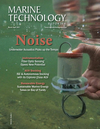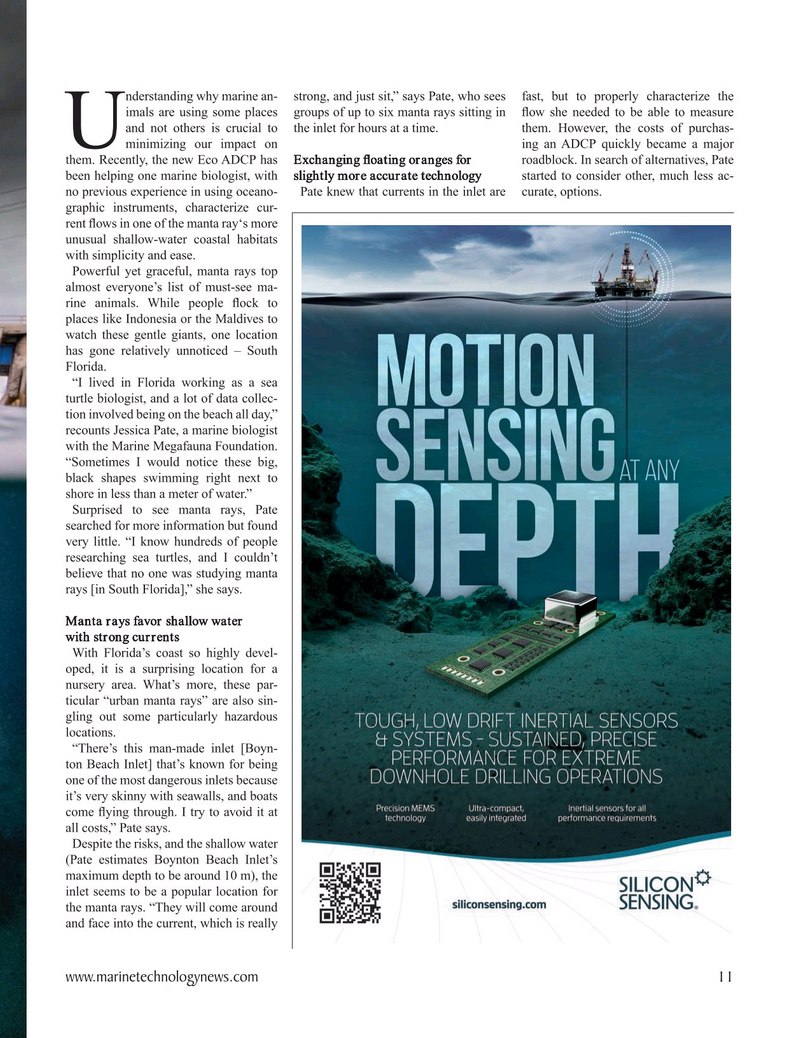
Page 11: of Marine Technology Magazine (March 2021)
Oceanographic Instrumentation & Sensors
Read this page in Pdf, Flash or Html5 edition of March 2021 Marine Technology Magazine
nderstanding why marine an- strong, and just sit,” says Pate, who sees fast, but to properly characterize the imals are using some places groups of up to six manta rays sitting in ? ow she needed to be able to measure and not others is crucial to the inlet for hours at a time. them. However, the costs of purchas-
Uminimizing our impact on ing an ADCP quickly became a major them. Recently, the new Eco ADCP has Exchanging ? oating oranges for roadblock. In search of alternatives, Pate been helping one marine biologist, with slightly more accurate technology started to consider other, much less ac- no previous experience in using oceano- Pate knew that currents in the inlet are curate, options. graphic instruments, characterize cur- rent ? ows in one of the manta ray‘s more unusual shallow-water coastal habitats with simplicity and ease.
Powerful yet graceful, manta rays top almost everyone’s list of must-see ma- rine animals. While people ? ock to places like Indonesia or the Maldives to watch these gentle giants, one location has gone relatively unnoticed – South
Florida.
“I lived in Florida working as a sea turtle biologist, and a lot of data collec- tion involved being on the beach all day,” recounts Jessica Pate, a marine biologist with the Marine Megafauna Foundation. “Sometimes I would notice these big, black shapes swimming right next to shore in less than a meter of water.”
Surprised to see manta rays, Pate searched for more information but found very little. “I know hundreds of people researching sea turtles, and I couldn’t believe that no one was studying manta rays [in South Florida],” she says.
Manta rays favor shallow water with strong currents
With Florida’s coast so highly devel- oped, it is a surprising location for a nursery area. What’s more, these par- ticular “urban manta rays” are also sin- gling out some particularly hazardous locations. “There’s this man-made inlet [Boyn- ton Beach Inlet] that’s known for being one of the most dangerous inlets because it’s very skinny with seawalls, and boats come ? ying through. I try to avoid it at all costs,” Pate says.
Despite the risks, and the shallow water (Pate estimates Boynton Beach Inlet’s maximum depth to be around 10 m), the inlet seems to be a popular location for the manta rays. “They will come around and face into the current, which is really www.marinetechnologynews.com 11
MTR #3 (1-17).indd 11 3/22/2021 5:56:15 PM

 10
10

 12
12
